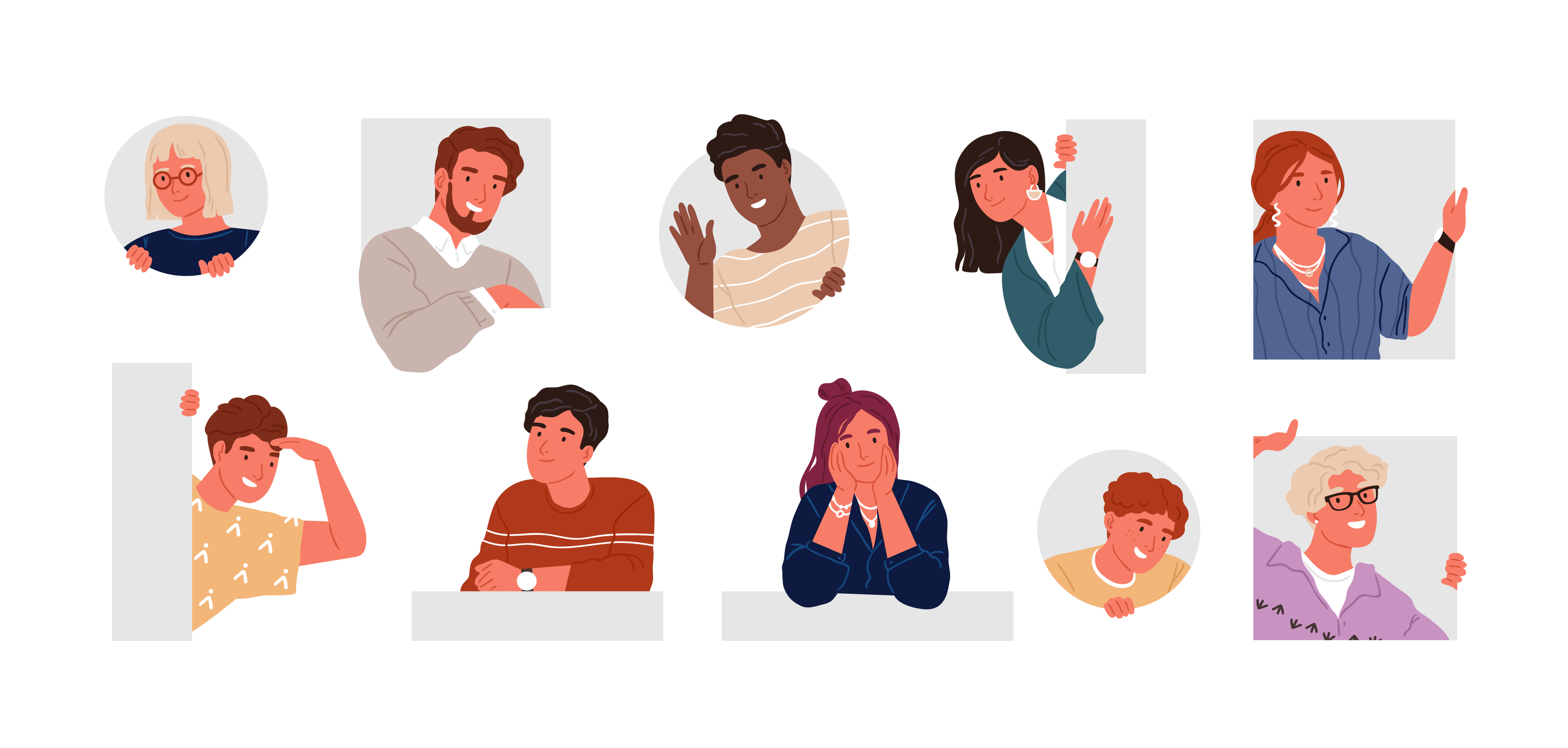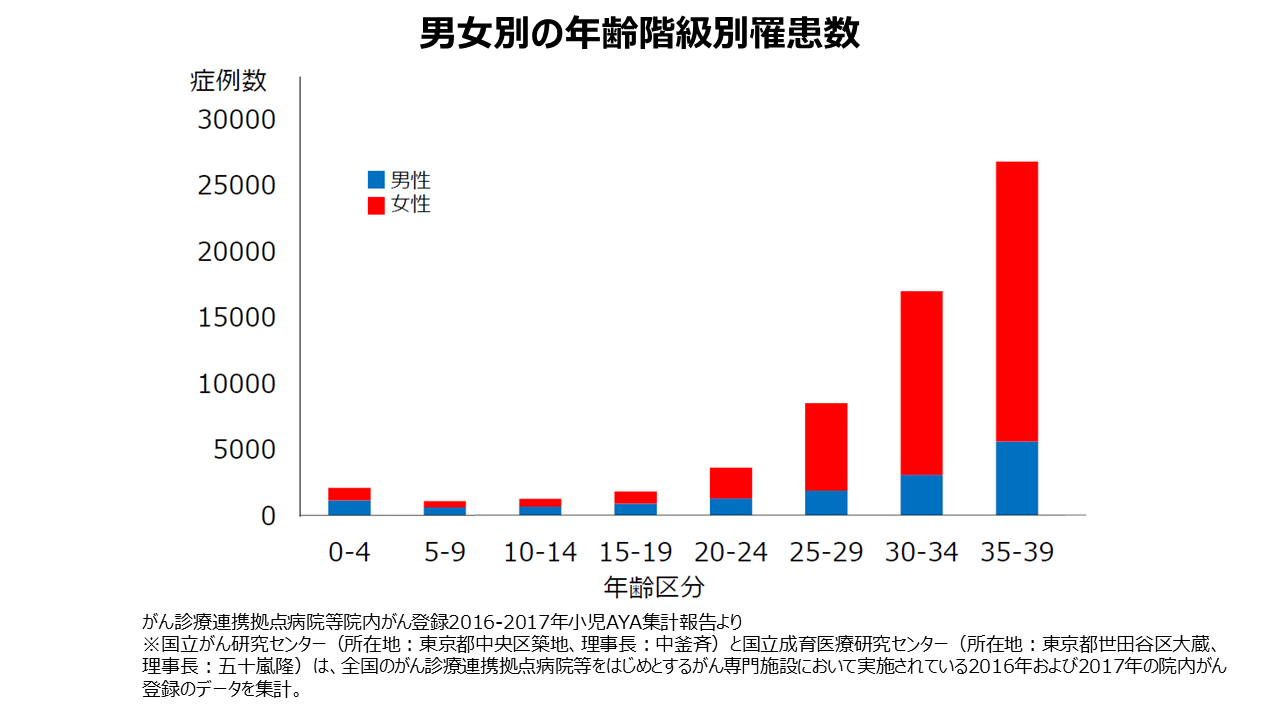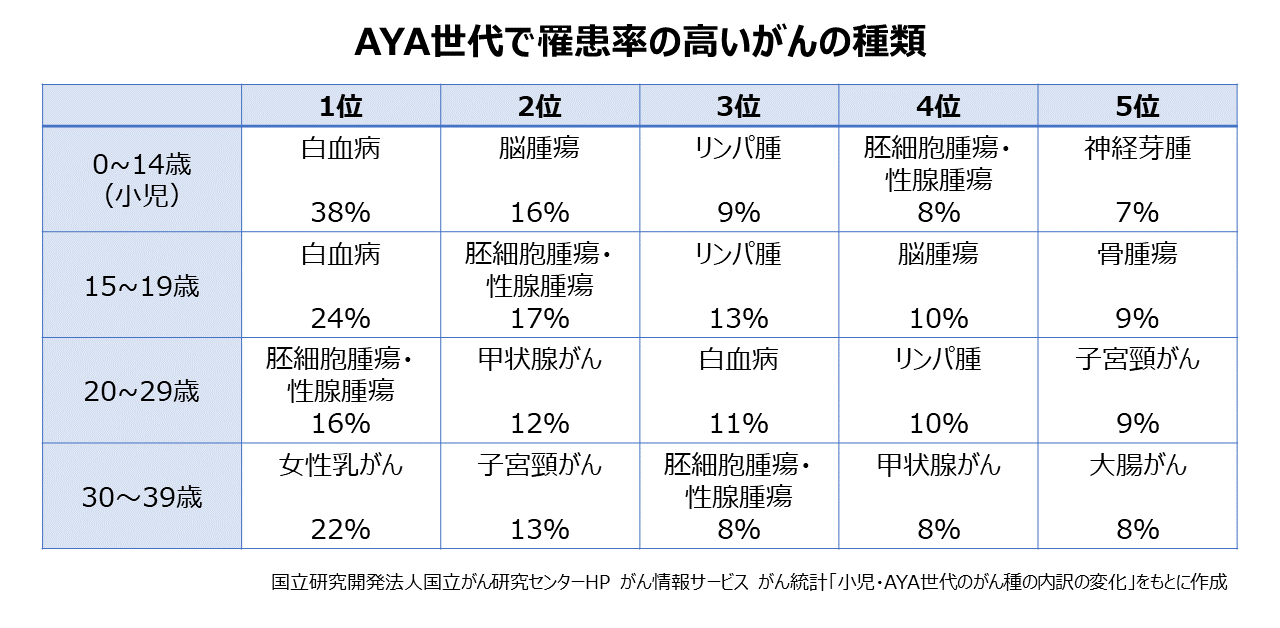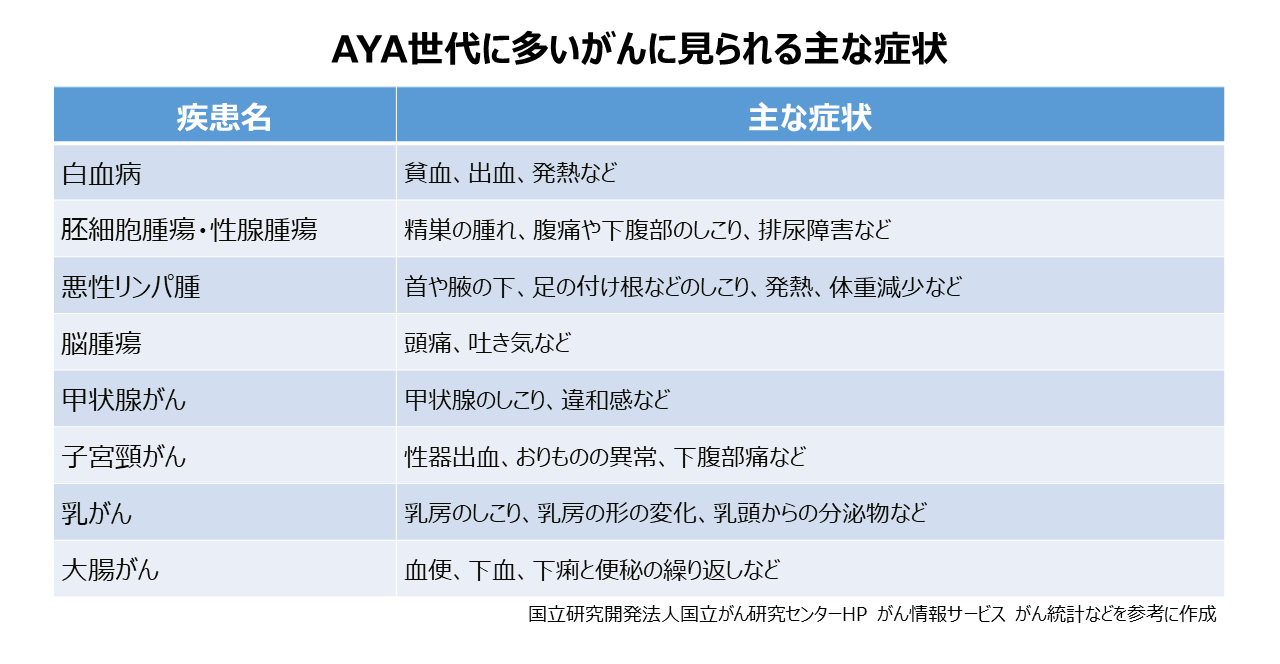
Release date: 2023.09.21
The AYA generation is an abbreviation for Adolescent & Young Adult, and refers to people between the ages of 15 and under 40. There are approximately 20,000 cancer patients in this age group each year, and their life stages change significantly, such as going to higher education, finding employment, and raising children, so treatment tailored to their needs is required.
In Japan, it is estimated that approximately 20,000 AYAs are diagnosed with cancer each year. The estimated number of cancer diagnoses by age group is approximately 900 cases for those aged 15 to 19, approximately 4,200 cases for those in their 20s, and approximately 16,300 cases for those in their 30s (based on incidence rates from 2009 to 2011). Estimate). In recent years, the incidence of cancer in young people has been increasing, but since the AYA generation also includes the transition period from childhood to adulthood, cancers that often occur in children and those that often occur in adults are common in the AYA generation. It is possible to develop both types of cancer, and the types of cancer that are more likely to develop differ depending on the age group. Among children between the ages of 15 and 19, cancers such as leukemia, lymphoma, germ cell tumors/gonadal tumors (such as testicular cancer and ovarian cancer), brain tumors, and thyroid cancer, which are more likely to occur in children, are common; It gradually decreases in people's 30s, and cancers such as breast cancer, cervical cancer, and colorectal cancer especially increase in women in their 30s. According to an analysis by the National Cancer Center and other organizations, nearly 80% of people diagnosed with cancer in their 30s are women, unlike other generations.


The rate at which cancer progresses depends on its type. For example, cancers such as stomach cancer and colon cancer progress relatively slowly, often progressing over a period of years, while acute leukemia and lymphoma progress quickly, sometimes within a day. Cancers that are more likely to occur in the AYA generation tend to progress quickly. Furthermore, the AYA generation has fewer opportunities to receive cancer screenings and health checkups, limiting opportunities for early detection. Therefore, there are many cases where the condition is discovered when visiting a hospital due to some symptoms or during a health checkup. Compared to the elderly, they are less aware that they will get cancer, so they are less likely to suspect cancer based on their symptoms, and it is often discovered when the symptoms have progressed.

For leukemia, lymphoma, brain tumors, etc. that are common in people between the ages of 15 and 20, treatment based on pediatric patients, which can be treated more intensively, may be more effective than treatment based on adult patients. Treatment varies depending on the type and stage of progression, but may include multiple approaches such as surgery, chemotherapy, radiation therapy, and immunotherapy. In recent years, advances have been made in targeted therapies tailored to the characteristics of individual cancers, making more effective treatments possible. In addition, cancer treatment for the AYA generation mainly affects the functions of the ovaries, testicles, etc., so patients who wish to become pregnant or give birth will need to take countermeasures. For this reason, in order to reduce the financial burden on AYA cancer patients who wish to cryopreserve eggs, sperm, fertilized eggs, etc. prior to cancer treatment, a government subsidy will begin in 2021.
This is an important time for the AYA generation to grow and develop physically and mentally and become independent, and it is also a time when they face important life events such as going to school, working, getting married, and having children while battling cancer. . Since there are various situations in which people are faced with psychological and social problems, it is important to provide support not only from medical institutions but from society as a whole.
MEDIUS Group is developing a business centered on the sale of medical equipment. We (Medical + us) involved in medical care also want to play the role of an information source (Media) that delivers useful information for the medical field and people's healthy tomorrow.